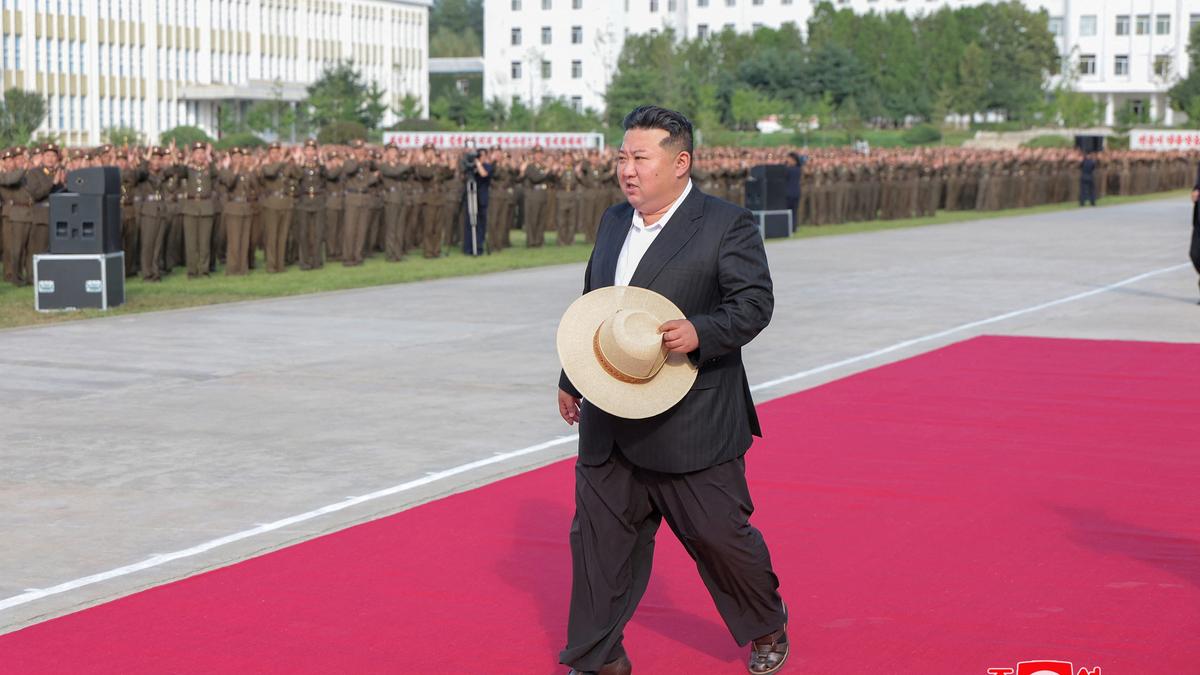North Korea’s leader Kim Jong Un has underscored the importance of bolstering the country’s naval power, particularly through the development of modern warships and submarines, as part of an ongoing effort to enhance national security. This move reflects the evolving nature of North Korea’s military strategy and its perceived threats.
A Push for Modern Naval Power
Kim Jong Un’s visit to a naval base construction site signifies his focus on upgrading North Korea’s maritime capabilities. His directive to build a new naval base capable of accommodating large warships and submarines points towards a shift in naval doctrine, emphasizing the use of modern, technologically advanced vessels. The emphasis on the ability to deploy anti-aircraft and coastal-defense systems indicates the growing concern over potential threats from neighboring nations.
Beyond Conventional Warships
The news that North Korea’s “Sinpo-C” class submarine, designed to carry ballistic missiles, is undergoing a significant fit-out process further emphasizes this shift towards advanced technology and more offensive capabilities. This investment in the development of a new class of submarines signifies North Korea’s intent to enhance its underwater deterrent and potentially target adversaries at greater distances.
A Multi-Pronged Approach to Modernization
Kim Jong Un’s directive to increase national investments in shipbuilding projects underlines the strategic importance of this sector for the country. The goal is not merely to construct new warships, but to develop a shipbuilding industry that can provide a steady stream of advanced naval assets for the future. This approach is also evident in his visit to a defence industrial enterprise where he stressed the need to make munitions production more scientific and modernised.
Counterbalancing Threats: Geopolitical Considerations
North Korea’s geographical position, surrounded by seas on both sides, has always been strategically significant. The specific site selected for the new naval base, though not publicly revealed, is likely chosen for its strategic advantages in terms of control and potential operational reach. These developments seem to directly respond to increasing tensions with regional adversaries.
Responding to Regional Tensions: North Korea’s Perspective
North Korea’s condemnation of the US-South Korea joint extended deterrence consultation and simulation drills underlines its escalating concerns over perceived threats from the US-South Korean alliance. North Korea sees these exercises as hostile provocations that contribute to escalating tensions in the region, jeopardizing stability. Their response, indicating a continued commitment to “practical measures” against the US’s “long-term nuclear confrontation,” suggests a readiness to escalate their own defense posture if they believe their security is threatened.
Provocations and Escalation: A Continuing Trend
North Korea’s continued launching of trash balloons towards South Korea further amplifies regional tensions. Although not directly related to naval developments, these actions suggest a pattern of escalating actions. While the purpose and effectiveness of these balloon launches remain unclear, they are perceived by South Korea as provocative and destabilizing.
Take Away Points
- North Korea is investing significantly in strengthening its naval capabilities, with an emphasis on modernizing its fleet and developing new weapons systems.
- These advancements, coupled with a focus on ballistic missile submarines, are likely intended to counter perceived threats and enhance its deterrence capabilities.
- North Korea’s actions, including condemnations of US-South Korean exercises and provocative balloon launches, indicate a heightened state of tension and a perceived need for increased preparedness in response to what it sees as hostile actions.
- The ongoing developments in North Korea’s military strategy suggest a focus on modernization, technological advancements, and strategic deployments aimed at asserting its military presence and responding to perceived threats.




